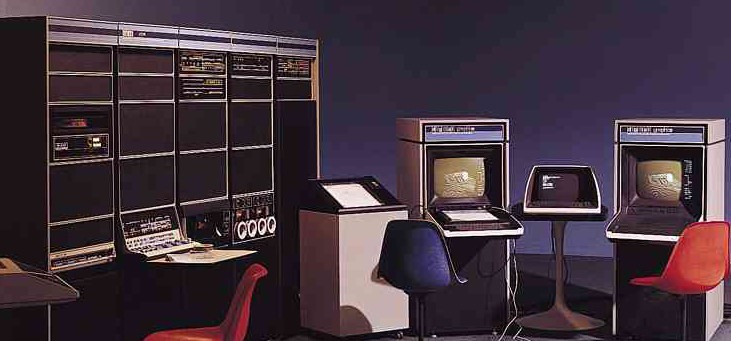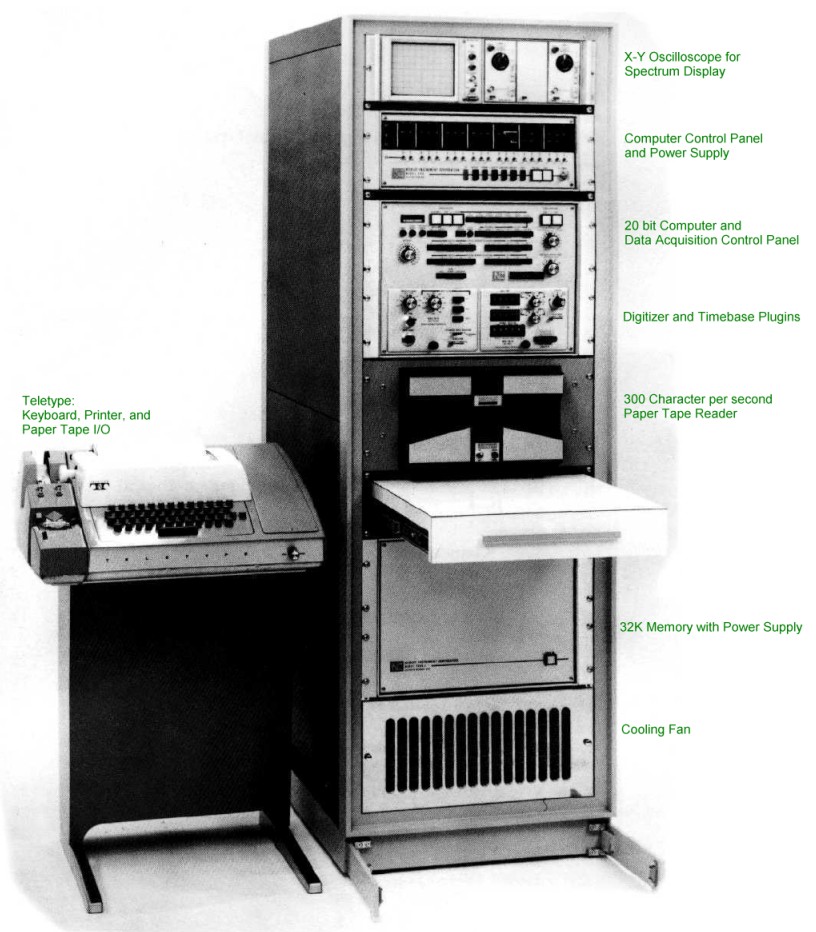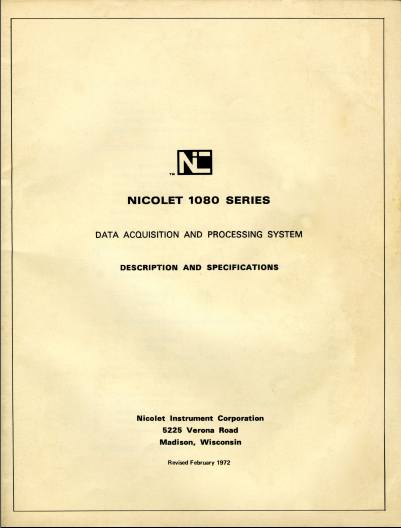The 1080 is born
How the 1070/PDP-8 becomes one box
In 1969 I proposed that Nicolet get into the computer business. I proposed a single box which combined the functions of a 1070 and a PDP-8. It came to be known as the 1080. The 1070 was really a more complicated machine than the PDP-8 and the 1070 was something we all knew. The 1070 had an analog front end and an analog to digital convector. The PDP-8 was purely digital and it seemed simple in comparison. I had spent only 2 months writing software for the PDP-8 and that was enough to launch a successful product. Getting into the computer business did not seem like a big deal to me.
Donald Haselhorst, Jack Krauss and Bob Schumann were all in the room when I presented the idea. They greeted the idea with mostly silence as I recall. I think they thought it was a good idea but they had reservations about me—for good reasons. I did not have an engineering or computer science degree. I had almost no track record. But I did know about the PDP-8 and the 1070.
There was little discussion about the merits of my proposal. I think it was because no one knew much about computers. I started the project without a time line, a budget or a clear goal. The only other person working on it was a mechanical designer named Bill Podell. He was invaluable and extremely productive but he too knew nothing about computers. Help came in many forms. There was drafting, printed circuit board assembly and machine shop work. But in the end, it was a two person project. It was entirely up to me to make it happen.
The PDP-15 backup plan

The PDP-15 was management's backup plan in case the 1080 project failed. The PDP-15 was placed so I would have to walk past it on the way to my office every morning. It was a physically large, 18 bit computer with impressive twinkle lights. I guess this was intended to motivate me. I studied the PDP-15 instruction set and I knew the 1080 would have a better instruction set. I was having great fun.
We had a working prototype in 18 months, including software. The PDP-15 was never used. This is what the 1080 looked like: It was a Janus-like monstrosity. One face looked like a 1070 the other like a PDP-8.

We did things the hard way. For example, we etched printed circuit boards in glassware
liberated from the kitchen. I had access to a PDP-8 and I could have used it to write a
cross assembler. Instead, I wrote an assembler for the 1080 using only pencil and paper.
I used the switch register to get it into the computer. Then I used the teletype to
create the source code for the assembler. That made it possible for the assembler to
assemble itself. I must have been crazy. The assembler was then used to write an editor,
a debugger, a floating point package including transcendental functions and a Cooley
Tukey FFT. The hardest part of the 1080 project, the part that took the most time, was
the magnetic core memory.
 Hardware
included, in addition to the computer, an analog to digital converter, a time base, a
board to drive an X-Y display and a serial port to drive the teletype. Here is a 35 page description of the 1080 from a hardware
perspective. It is written in jargon free language and refreshing to read.
Hardware
included, in addition to the computer, an analog to digital converter, a time base, a
board to drive an X-Y display and a serial port to drive the teletype. Here is a 35 page description of the 1080 from a hardware
perspective. It is written in jargon free language and refreshing to read.
Once it became clear that the 1080 was going to be a success, more resources were
allocated for it. That included new hires. One of them, James W. Cooper, wrote the above
description of the 1080. He also wrote application software of very high quality, in
addition to writing most of the documentation. Since leaving Nicolet in 1976, he has
published 15 books. Cooper
has a website.
A complete set of schematics for the 1080 was found at http://www.bitsavers.org/ in pdf format.
They are beautiful but they occupy 32 megabytes. Consider the time it will take to
download all 35 pages before clicking here.
Adam Allerhand of Indiana University was the brave person who bought the first 1080 in
1971. He had a homemade FTNMR and he needed a data system for it. AA, as he calls
himself, is still at Indiana. Now, he maintains a website devoted to the use of
"Technology in Undergraduate Education." He offers useful advice about instructional web
site design. I am following AA's unexpected advice by including an on-site Google search
engine on this site. AA's website which may be found at http://www.indiana.edu/~aainfo/